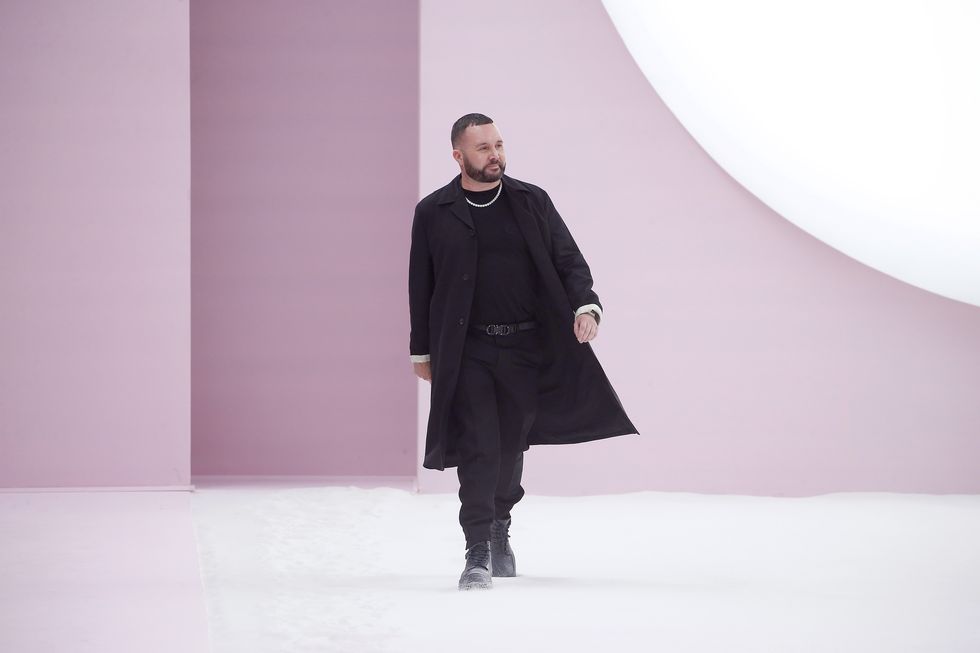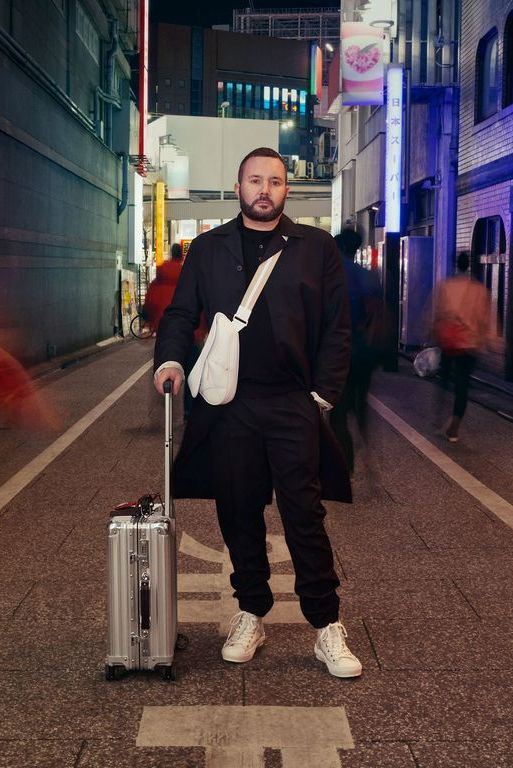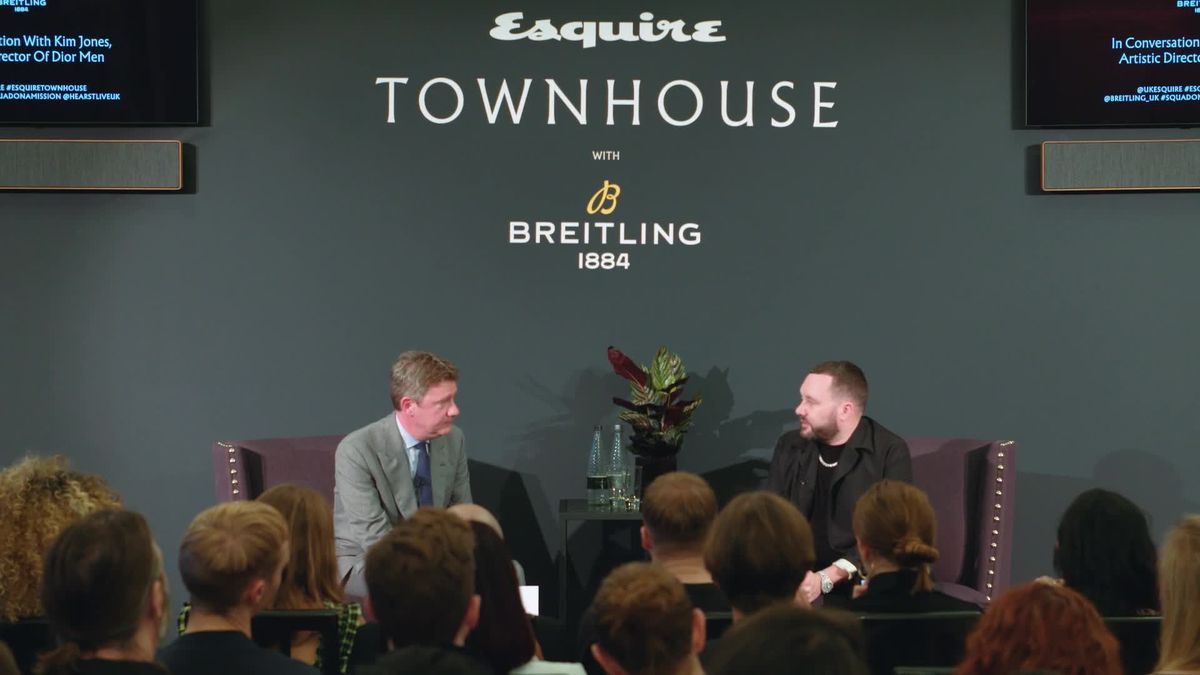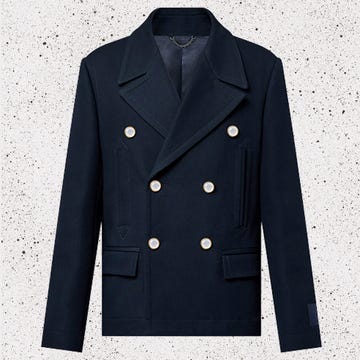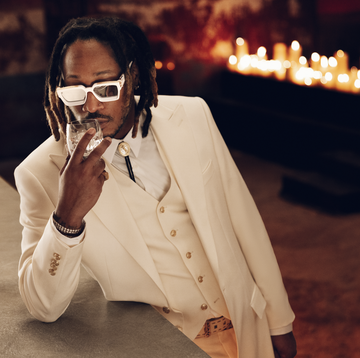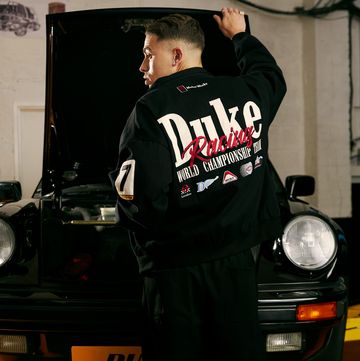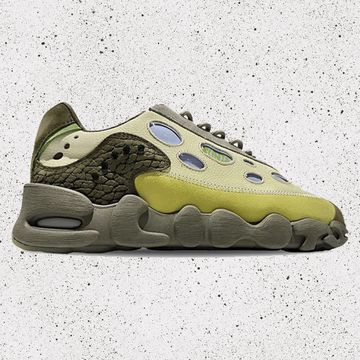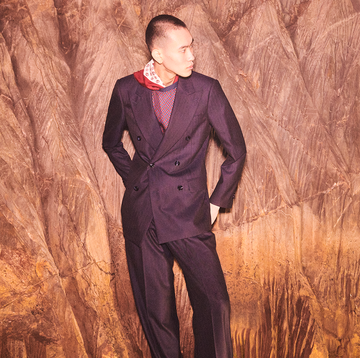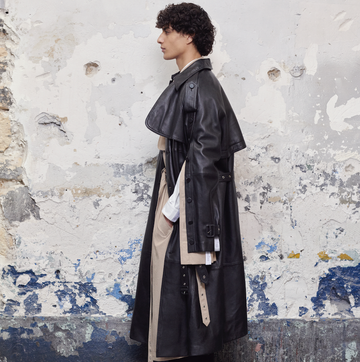All eyes are on Kim Jones: 28.2 million of them, if Dior's Instagram is anything to go by. Celebrity is a commodity these days, in fashion as much as anywhere else – dominate the pocket-sized shop window in the world's back pocket, and you too will accrue admiration. What's new is how the communal gaze has shifted from the people on the runway to those backstage. Creative directors have never been so famous.
And yet, despite all the critical and commercial success he's acquired during his tenure, Kim Jones doesn't swim naturally in the shark-infested waters of social media. "It still feels a bit weird," he tells us at Esquire Townhouse with Breitling, "getting stopped on the way to things. But I don't really mind." Which might seem surprising, since the Central St. Martin's grad is happy to regale his sell-out audience with tales of how fame has infiltrated the lives of close friends Kate Moss, and Naomi Campbell, and the Beckhams. By mere association, it'd be easy to become affected.
What's more, Jones does all the things a very famous person does. A campaign billboard, part of Dior's crossover with Rimowa luggage, showcased the designer's face to the world at Heathrow Airport. He, with photographer Nikolai von Bismarck, orchestrated an entire tome calling upon friends of his and Dior's (they're interchangeable these days) to feature within its pages. And yet, there's no performance in the designer, no contrived showmanship. Jones talks of his life – and his friends – like any London-born lad. They're not celebrities to him. They are, actually, just friends. "David is a really nice guy," he says, of the man the rest of us know as 'Becks'. "If everyone in the room here asked for a photo, he'd do it, and people can tell he's a nice guy because of that."
Jones, you think, would be equally accommodating. Off-stage, there's little fanfare. Just a small entourage of three. He sits down, politely declines a drink, and we conduct our exchange like a business meeting: a coffee-orientated meeting, mind, not a hostile takeover. "I was in conversation with a few different jobs before I moved to Dior, and they said they'd really like me to go there, and confirmed that I'd have everything I needed to do the job properly," he says of accepting the role from luxury multinational LMVH, to which the label belongs. "I joined on the 28th of March, did the first show on the 22nd of June. It was a whirlwind, but a good whirlwind."
Such pace offers much pressure, but the office in question only adds more weight: Dior is one of the world's most valuable brands and has been at the pinnacle of luxury fashion for 72 years. But it's pressure that, Jones says, he remains unaffected by. "I try not to think about it really, it's a bit surreal. I just get on with it. It's all a bit out of body." But then, it's hard to dwell on the big picture when you're at the centre of the whirlwind; since being on Dior's payroll, Jones has spearheaded seven collections in just a year and a half. Traditional show season this is not.
Jones kicked off his vision of Dior men's in Japan and, like the founder, prefers to work alongside artists to create a unique body of work. "What a lot of people don't know is that Christian Dior was a gallerist for 10 years before he was a couturier. He worked with Dalí and Picasso and a lot of the other important artists in Paris, so I thought it was nice to take that part of his life, and mix it altogether." For 2019, that meant a towering Hajime Sorayama-designed robot conducting a symphony of multi-coloured lasers above a parade of futuristic menswear. It's not Salvador Dalí, but it's no less arresting.
The vision for Dior men's has gathered pace during Jones' short time at the brand ("my original brief to myself was elegant, tailored couture," he says of the original approach), and the brand is taking its next show to Miami, fittingly enough, two days before Art Basel. Jones alludes to working with another artist for the event – "not on canvas, though they've had a huge influence on the way men dress in the contemporary world" – but is typically gnomic when pressed for a name.
He does admit, however, that a far-flung spectacle in Florida isn't so far from founder Christian Dior's signature. "I think of the brand as global, and he was global. He had a big relationship with Japan – that's why we did the first show there – and when he started Dior, he had an American publicist." The special relationship doesn't end in with the December Miami show, either. "Dior did a collaboration with Cadillac in 1955, and we've used this as a starting point: the colours, the details, the beading, and the embroidery. They're all really exciting but done in an interesting way." After all, menswear and anime robots aren't so different as a combination from couture and cars.
During our conversation, Jones returns time and again to mention of those archives, to Dior's history – both the brand's, and its founder's. And, despite the growing gaze upon Dior men's, Jones untangles a sense of self from the brand entrusted with his guardianship. He refuses to talk numbers, but maintains that he's "very good at [his] job". For now, he's driving the brand with blinkers on, to shield his vision from the crowd outside: "Dior is number one. I'm just merely designing it."

